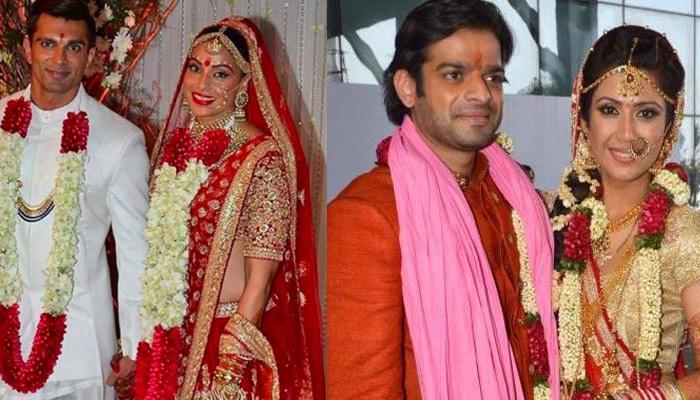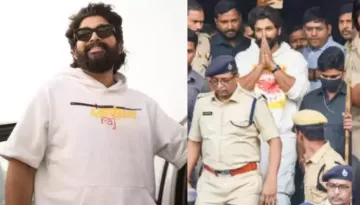From Pahadi To Malayali, Every Wedding Ritual And Custom In India

India is a land of multicultural diversity and many religions. Our festivals, traditions and customs are something which make India truly a cultural melting pot. There are multiple languages spoken everywhere and multiple variations of the same festivals in different parts of India.
Recommended Read: 50 Common Wedding Planning Mistakes You Must Avoid For A Perfect Wedding
Even our weddings are different from one another although the gusto and fervour with which they are celebrated are same everywhere.So, today we have for you various wedding customs and traditions that are observed in various parts of India, which thrive on the motto of “Unity in Diversity”.
#1. Assamese wedding

Image Courtesy: Rainbow Frames
The Assamese wedding is a colourful affair with lots of traditional customs. All the rituals are carried out in a simple way and most weddings are conducted in a simple manner. The celebrations start almost 2 days prior to the actual wedding with the groom’s mother and female relatives going to the bride’s house which is known as the juroon ceremony. Here, she showers the bride with gifts, and also the traditional wedding saree of Assam, known as mekhela sadoor or mekhela chador.
Check Out: 10 Best Bridal Mehendi Design Combos For Your Hands And Feet To Complete Your Bridal Look

Image Courtesy: Candid Memories
After this, in the evening the bride’s mother and female relatives go to the groom’s house to give him the gifts, which is known as the uluta juroon ceremony. After this, a series of rituals are carried out on the wedding day! A bowl of curd is sent to the bride’s house from the groom’s family, which she has to eat half and send back to the groom, who then eats the other half. This ceremony is known as the Daiyon Diya. This ceremony also marks the last meal of the day for both the bride and groom till they get married.
Continue reading below

Another interesting ritual is that the reception of the bride takes place before the actual wedding takes place. She greets all the guests with saunf and when the groom arrives, she changes into the traditional wedding attire, mekhela sadoor or mekhela chador, given to her by the groom’s mother. Xoptopodi is the seven rounds that the couple takes around the ceremonial fire, and then they are officially pronounced as married.
#2. Bengali wedding

The Bengali weddings are characterised by the ululation and conch blowing by the womenfolk, who signify the holy communion of the bride and the groom. Bollywood’s IT couple, Bipasha Basu Singh Grover and Karan Singh Grover got married in the traditional Bengali style.
Also Read: The Sacred Rituals Of A Traditional Bengali Wedding That Make It A Vibrant, Colourful Dream

These weddings start with the Ashirbaad ceremony where the bride and groom’s parents bless them and give them gifts, which tells to the world that they both are to tie the nuptial knot soon. On the wedding day, the Dodhi Mongol ceremony is carried out which involves seven married ladies of the bride’s house. They make the bride wear the traditional bangles, known as the Shakha and Paula, and also feed her a meal of curd and rice- her only meal for the day.

Image Courtesy: Dream Artisans
After this, the main wedding function start with the welcoming of the groom, also known as the Bor Boron ceremony. The bride is made to sit on a low stool, known as the pidi, and her brothers pick her up and take seven rounds of the groom. During this time the bride’s eyes are covered with betel leaves.
Also For You: Breathtaking Wedding Journey Of Beautiful Bengali Brides

After this is done, the bride and groom exchange garlands and then they are allowed to see each other, which is known as the Subho Dristi ceremony. Once this is done, a priest reads out some mantras and then the groom puts sindoor in the bride’s hair parting, and she covers her head with a new saree offered by the groom. This solemnises their marriage.
#3. Buddhist wedding

Buddhist weddings are an extremely simple affair and are mostly based on the Buddhist faith rather than religion. These weddings generally have two components, Buddhist component and Non-Buddhist component. While the former involves the bride and groom’s families offering their prayers and exchange of gifts, the latter comprises of the traditional practices related to the weddings, which are followed by both the families.

Buddhist weddings give a lot of importance to horoscope matching, and once that is done, they decide on an auspicious wedding date in consultation with the Lama (a Buddhist priest). After this, the Chessian Betrothal ceremony is conducted where the maternal uncle of the bride is made to sit on a raised platform and after offering prayers, the holy drink madyan is served.

Images Courtesy: Angela Gaul
Then the traditional wedding ceremony starts with the couple bowing in front of Buddha’s idol, they then recite chants and light incense sticks. After which the parents tie a couple of strings around the couple’s head to connect them and they offer flowers, food and sweets to the monks. After that, the priest blesses the newlywed couple and a red paste is applied on their foreheads.
#4. Gujarati wedding

Gujarati weddings are simple and filled with fun. The ceremonies start with the Mangal Muhurat ritual, where the horoscopes are matched and an auspicious date is fixed. It is then followed by the Jaan ritual in which the groom visits the bride’s place and seeks blessings from his mother-in-law, who then tries to clutch his nose and he tries to escape.
Do Check This Out: Beautiful Wedding Journey Of A Gujarati Bride And Groom From 'Sagai' To 'Lagna'

On the day of the wedding, the jaimala ceremony takes place where the bride and the groom exchange garlands twice. Next is the Madhuparka ritual in which the groom is given honey and milk to drink. The kanyadaan is considered to be the most important ritual in which the bride’s father washes the groom’s feet and gives him the hand of his daughter.

Image Courtesy: Dkreate Photography
The tying of the holy knot, known as the hasta milap signifies their union after which they take four pheras around the ceremonial fire, which is known as the mangalpheras. Television stars, Karan Patel and Ankita Bhargava got married in the traditional Gujarati style.

#5. Marwari wedding
Marwari weddings are super-glamorous and grand! Each pre-wedding and wedding function boasts of unmatched grandeur and glory. The wedding functions start with sagai, which is a men’s only function where the bride’s brother does the teeka of the groom and present him with gifts.

Image Courtesy: The Wedding Story
The next is the most important ceremony known as the Pithi Dastoor ritual, where a turmeric paste is applied to the bride and the groom and they are forbidden from leaving the house till the wedding day. Then the Mahira Dastoor ceremony is celebrated, which involves the uncle of the bride/groom. He comes with gifts and sweets for the entire family. The wedding starts with the toran ceremony where the groom, while entering the venue, hits the toran with a stick of neem to ward off all evil.
Also Read: The Wedding Journey Of A Marwari Bride Will Leave You Teary-Eyed

Image Courtesy: Dkreate Photography
After this the Granthi Bandhan ceremony is done in which either the groom’s sister or the priest ties the cloth on the groom’s waist to the bride’s dupatta, signifying the union of the couple. After the pheras are over, the groom requests the bride to sit on his left side in a ceremony known as the Vamang-Sthapana or Sindurdaan. After this, a Saptapadi ceremony is carried out where the bride and groom walk seven steps together, and then the Aanjhala Bharaai ceremony is carried out in which the groom’s father places a bag full of money in the bride’s lap, signifying that she has been accepted by the family.
Image Courtesy: The Wedding Story
#6. Maharashtrian wedding

Weddings in Maharashtra are a colourful affair, with a host of beautiful rituals that make them all the more special and unique. The functions start with the Shakar Puda ceremony in which the bride and groom are given sugar as a symbol of sweet beginnings to their wedding.
After this, the Haldi Chadawat ceremony is performed for both the bride and groom, in which mango leaves are immersed in haldi and the couple is immersed in them. The groom then partakes in a Simant Puja in which he comes till the boundary of the bride’s house and her mother does a puja with him.
Don't Miss: Beautiful Maharashtrian Brides And Their Special Wedding Moments

Then the chooda ceremony is conducted in which the bride’s friends get green bangles for the bride, which she can take off only one month after the wedding. The wedding day starts with invoking Lord Ganesha’s blessings, which is followed by the bride being dressed up in a traditional yellow Maharashtrian saree and a mundavalya or a string of flowers or pearls. She is made to sit in a secluded room praying to Goddess Parvati till the time she is called to the mandap.

Once the bride comes to the mandap, the bride and groom are not allowed to see each other and a silk dupatta known as the Antarpat is dangled between them. Once the mantras are spoken, the antarpat is removed and the couple gets to see each other. Then they take the pheras and the bride’s father conducts the kanyadaan ceremony also known as the jhal phirawane ceremony, which concludes the ceremonies and the bride and groom are tied in the ceremonial knot.
7. Pahadi wedding

Pahadi people are quite simple and their weddings are devoid of any glamour. The most important thing in a pahadi wedding is the nath of the bride, which is known as the Nathuli. It is gifted by the groom’s mother to the bride. Just like any other wedding, pre-wedding functions such as engagement and mehendi are held in a pahadi wedding.

The wedding day sees the Suwal Pathai being made and offered to the Gods. Duliargh is the ceremony when the bride’s father, and his priest worship the groom and the priest offer him gifts and sweets. After this, the bride and groom exchange varmalas and they take pheras around the ceremonial fire, which are not witnessed by the bride’s parents.
#8. Malayali wedding

Check Out: Expert Guide To Choose Wedding Dress according to your Body Shape
Malayali weddings are extremely simple and generally take place in the morning at the bride’s maternal home. There are no strict rules in a Malayali wedding. The day starts with the bride and groom getting ready. The bride is helped by her friends who adorns a traditional two-set saree and heavy gold jewellery, and the groom is dressed up in a traditional dhoti and silk shirt.

Image Courtesy: Andy Lim
When the groom reaches the venue, he is generally welcomed by the bride’s brother and is taken to the mandapam. The bride takes four rounds around the groom and then sits next to him. The nuptial ceremony is traditionally called the veli and it is officiated by a priest. They take three rounds around the ceremonial fire after which the groom applies sindooram to the bride and the bride applies chandan on the groom’s forehead.

Image Courtesy: Weva Photography
So, are you amazed at all the cultural diversity that India has to offer? Well, what customs are followed in your region? Do let us know in the comments section below.
Next Read: How To Choose A Perfect Indian Wedding Dress According To Your Skin Tone
Images Courtesy: Instagram, Pinterest
advertisement
advertisement
advertisement









